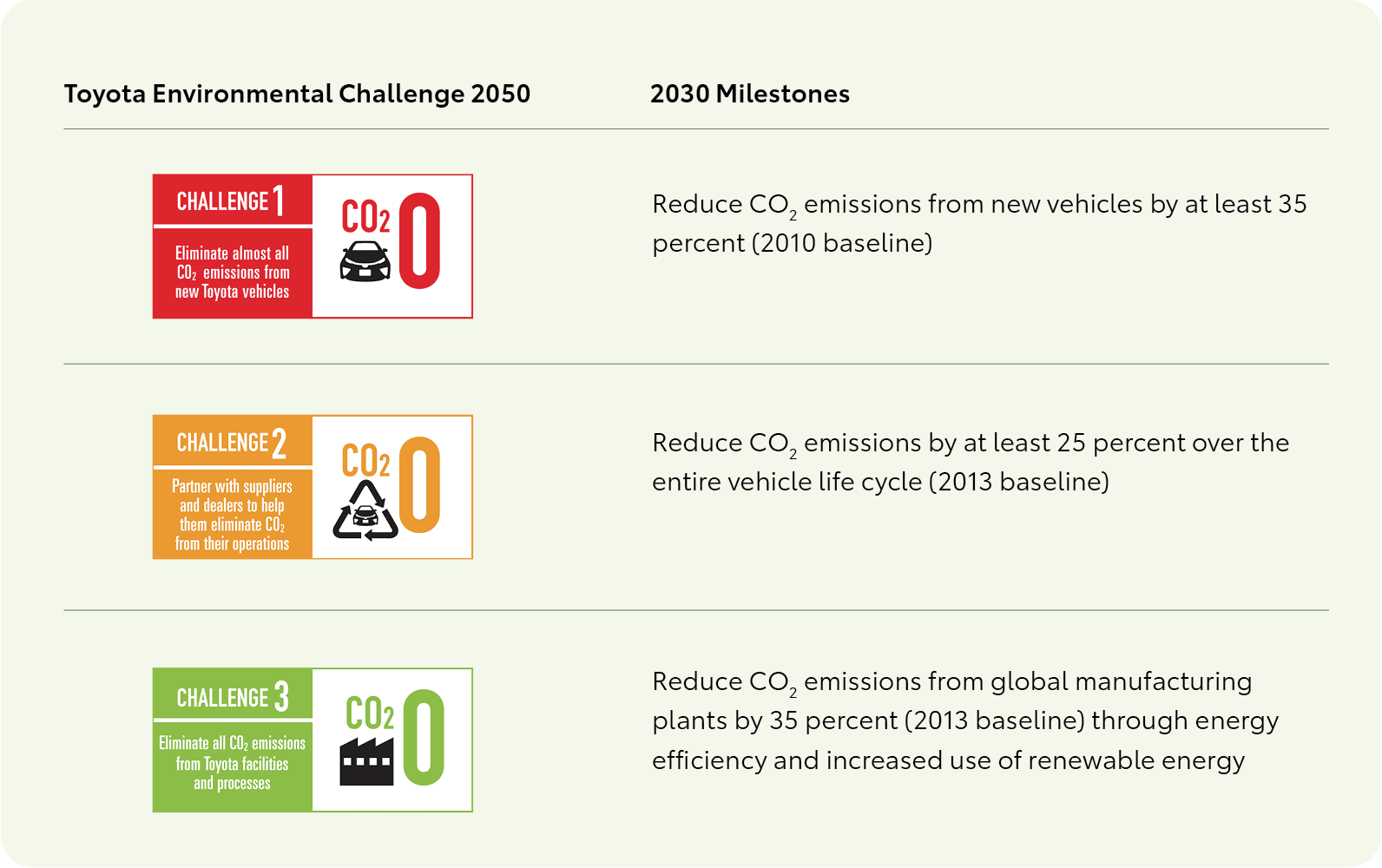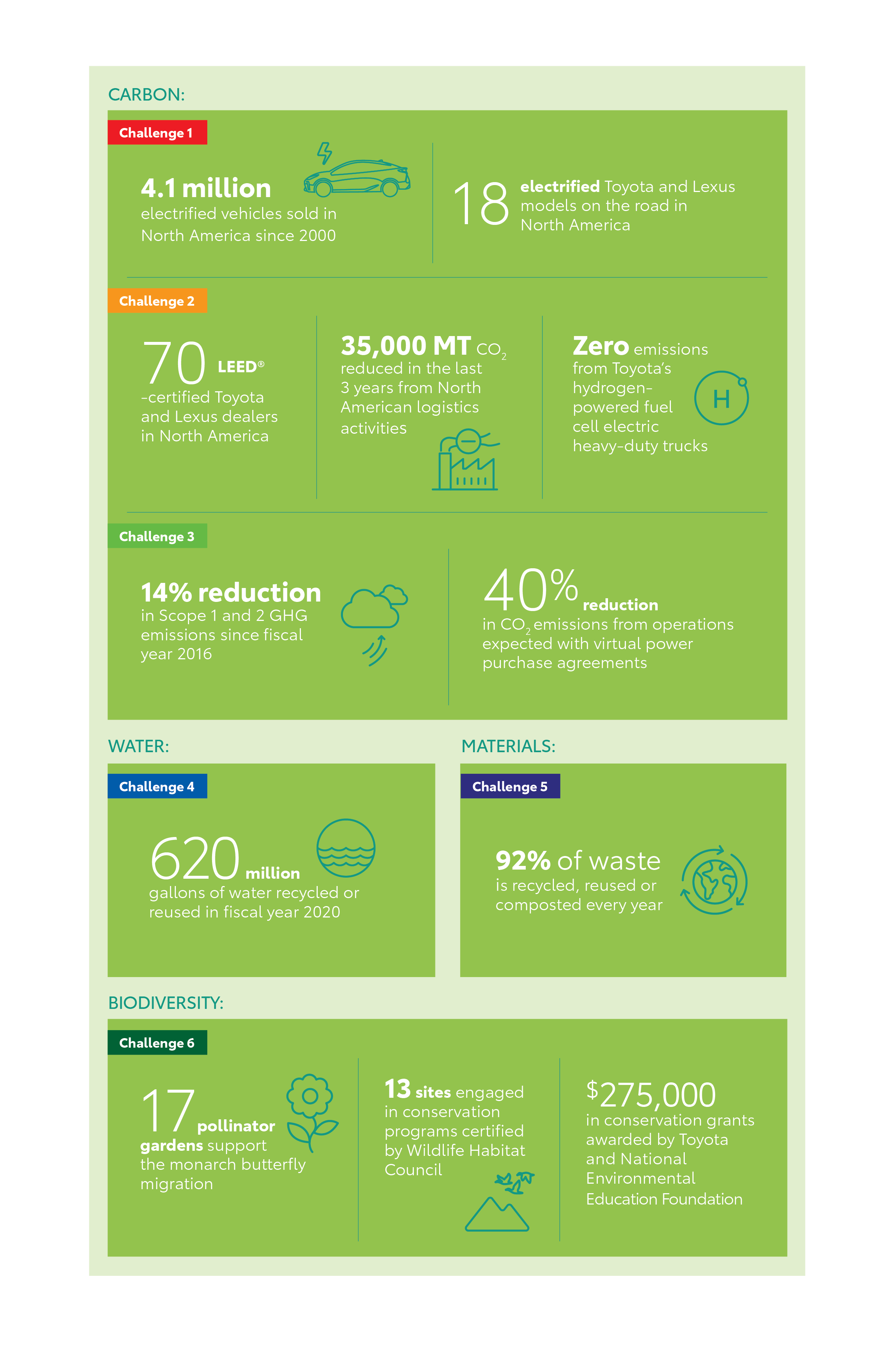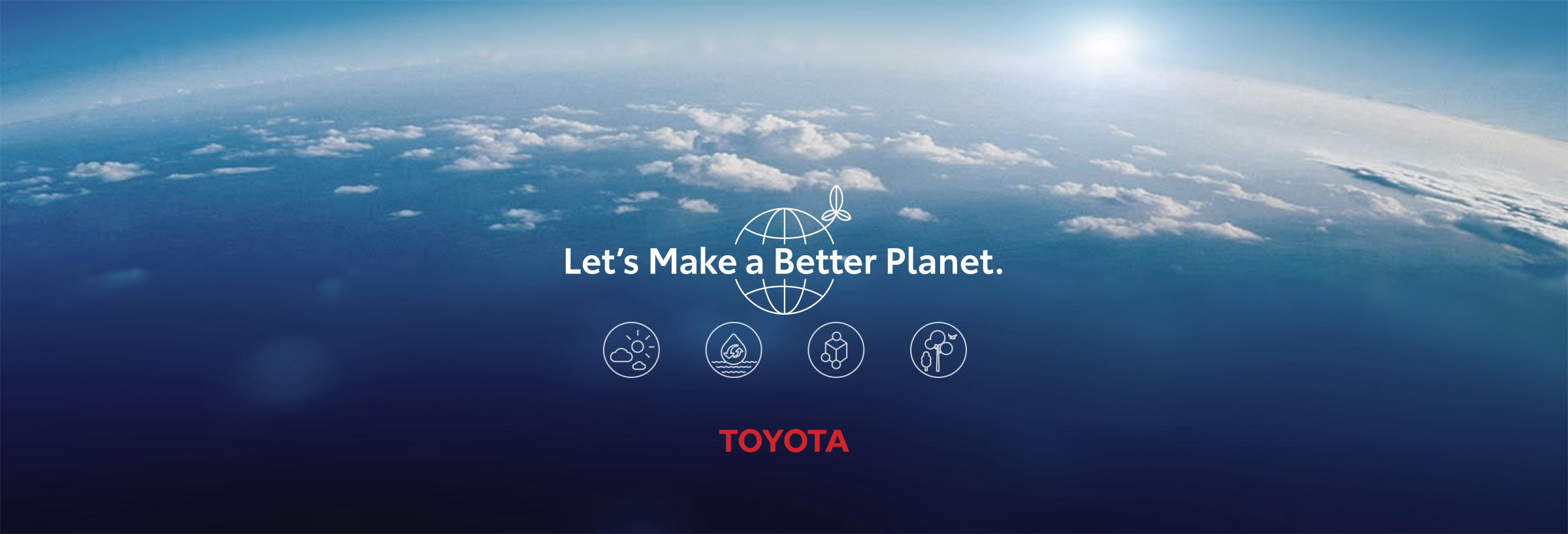WHAT IS THE TOYOTA ENVIRONMENTAL CHALLENGE 2050?
The Toyota Environmental Challenge 2050 (Challenge 2050) is a set of six challenges — three on reducing CO2 emissions that cause climate change, one on conserving water, one on improving material flows, and one on protecting nature — that seek to go beyond eliminating negative environmental impacts to creating net positive impacts on the planet and society. Toyota Motor Corporation (TMC, Toyota’s parent company headquartered in Japan) announced these six challenges in 2015 after extensive research and internal and external consultation. The goals, which apply to all Toyota subsidiaries around the world, are the most demanding and most inspiring environmental commitments this company has ever made.
The six goals of Challenge 2050 are:
- Challenge 1 – Reduce CO2 emissions from new vehicles by 90% (2010 baseline)
- Challenge 2 – Eliminate CO2 emissions from suppliers and dealers
- Challenge 3 – Eliminate CO2 emissions from operations
- Challenge 4 – Conserve water and protect water resources
- Challenge 5 – Support a recycling-based society
- Challenge 6 – Operate in harmony with nature
Challenge 2050 is how team members across the company, in every region of the world, put Toyota's global vision of Respect for the Planet into action. Challenge 2050 unites us all with a common purpose – to be more than just good stewards of the environment and to create positive changes beyond our facility boundaries.
WHY IS TOYOTA FOCUSING ON THESE SIX CHALLENGES?
In 2015, TMC conducted a global evaluation of environmental trends, risks and opportunities to identify topics that reflect the company’s most significant (material) environmental impacts. As a result of this process, TMC identified six challenges in Challenge 2050 to address these issues:

HOW DOES CHALLENGE 2050 SUPPORT THE SDGS?
One major input to TMC's evaluation of material issues was the United Nations (UN) 2030 Agenda and the 17 Sustainable Development Goals (SDGs). The SDGs and their corresponding 169 targets run from 2016 through 2030 and in that time, seek to "free the human race from the tyranny of poverty and want and to heal and secure our planet." This may sound like an unrealistic mission, but the UN goals are actually achievable – if governments, businesses, nonprofits, other organizations and even individuals all do their part.
At Toyota, we are committed to doing our part. The Toyota Environmental Challenge 2050 supports many of the SDGs and shares their fundamental mission — to make the world better, safer and healthier.
Each of Toyota's major regions is developing strategies and targets to help the company achieve these goals. Here in North America, our activities supporting both Challenge 2050 and the SDGs are organized by our core focus areas of Water, Carbon, Materials and Biodiversity. Our long-term strategies in each of these focus areas show the steps we're taking to address the world's pressing environmental problems and become part of the solution. We believe environmental sustainability activities undertaken within our four focus areas, complemented by outreach, can make significant contributions to six of the UN's Sustainable Development Goals. For more information on how we contribute to the SDGs in North America, see our feature story here.

HOW IS TOYOTA PLANNING TO ACHIEVE CHALLENGE 2050?
Through a combination of continuous improvement (kaizen), new technology, and creative thinking. And, perhaps most importantly, by sharing know-how. These challenges are complex and won’t be achieved alone. They will take working with partners who will help us find success along the way.
Developing strategies for a 30-year period is difficult, given the uncertainties in planning so far into the future. So, Toyota established some milestones for 2030 to help keep track of progress. For more information on Toyota's global 2030 milestones, visit https://global.toyota/en/sustainability/esg/challenge2050/

In addition to the 2030 Milestones, Toyota continues to work on five-year environmental action plans (EAPs). The current five-year plan runs from 2017 to 2021. The targets in this EAP hold each Toyota region accountable for its performance. Toyota reports on performance against targets in annual environmental reports. Click here for Toyota's global Environmental Report, and here for Toyota's North American Environmental Report (see in particular 2021 Targets).
WHAT PROGRESS HAVE WE MADE IN NORTH AMERICA TO SUPPORT CHALLENGE 2050?
Here at Toyota Motor North America, we aligned the six global challenges into our four North American focus areas of Carbon (Challenges 1, 2 and 3), Water (Challenge 4), Materials (Challenge 5) and Biodiversity (Challenge 6).
Step by step, we are making progress towards achieving the challenges in Challenge 2050. We are reducing environmental impacts, and we're starting to see how we can turn that into net positive.

Find out more by visiting IDEAS & ACTIONS and the North American Environmental Report
